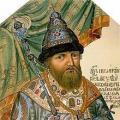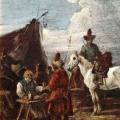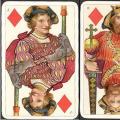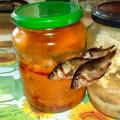Izhevsk is a city in the Russian Federation; it is the capital of the Udmurt Republic and received city status in 1918. The city of Izhevsk was renamed Ustinov in 1984 and bore this name until 1987. It is one of the twenty largest cities in Russia and ranks 19th. From the national language - Udmurt it sounds like Izh, Izhkar.
The city of Izhevsk is a large transport, economic, cultural and trade center of Russia, it is famous in the Russian Federation, as well as throughout the world, for its industries, such as the engineering industry, the defense industry and the metallurgical industry. Izhevsk is considered the largest industrial center in the Urals and the entire Volga region. The city was awarded the title of labor glory.
The population, according to data from January 1, 2013, is more than 632 thousand inhabitants, this number is approximately half of all people living in the Republic of Udmurtia. the city ranked nineteenth in terms of population among all cities in the Russian Federation.
The location of the city of Izhevsk lay on the Izh River, which is where the name of this city came from.
There is an alternative name - the Arms Capital of Russia.
Before Izhevsk began to be called a city and received this title, it was a village near a plant and bore the same name - Izhevsk Plant.
National composition
Today the city is home to more than one hundred nationalities. If we take the 2002 census data, then the indigenous inhabitants - Udmurts make up only 30%, the majority are Russians - this is 58.9%, nationality number three is the Tatars, their number is 9.6%, the remaining 1.5% is distributed between Belarusians, Ukrainians, Mari, Chuvash and Bashkirs.z>
Population of Izhevsk for 2018 and 2019. Number of residents of Izhevsk
Data on the number of city residents are taken from the Federal State Statistics Service. The official website of the Rosstat service is www.gks.ru.
The data was also taken from the unified interdepartmental information and statistical system, the official website of EMISS www.fedstat.ru.
The website publishes data on the number of residents of Izhevsk. The table shows the distribution of the number of residents of Izhevsk by year; the graph below shows the demographic trend in different years.

On our website you will find photographs of Izhevsk from different years. Izhevsk photo of the city in different years from Soviet times to the present day.
Information about the city of Izhevsk on Wikipedia.
Geographical position. The Udmurt Republic (Udmurtia) belongs to the Volga Federal District and is located in the western part of the Middle Urals between the Vyatka and Kama rivers. The area of the republic is 42.06 thousand square meters. km. (0.25% of the total area of Russia), exceeds such Western European countries as Belgium, Switzerland and is approximately equal to the area of Denmark. The length of the territory from north to south is 297.5 km, from west to east – 200 km. The total length of the borders is 1800 km.
It borders: in the north and west with the Kirov region, in the east - with Perm, in the southeast - with the Republic of Bashkortostan, in the south - with the Republic of Tatarstan. Such a neighborhood opens up broad prospects for mutually beneficial economic integration and determines a relatively high level of competition in the struggle for investments, sales markets, and labor resources.
From the capital of Udmurtia, Izhevsk, to Moscow is 970 km. St. Petersburg - 1370 km, Ekaterinburg - 450 km, Kazan - 279 km. The territory consists of a number of hills and lowlands. The main natural zones: taiga (in the northern part) and subtaiga (in the southern part).
The republic's position in the middle and northern latitudes and the absence of nearby seas and oceans determine a temperate continental climate with cold snowy winters and warm summers and well-defined transition seasons.
Time zone MSK+1.
Population. Udmurtia is a multinational republic where representatives of more than one hundred and seventy nationalities and ethnic groups live. The most numerous of them are Russians, Udmurts and Tatars. According to preliminary data from Udmurtstat, as of January 1, 2017. The permanent population was 1517.1 thousand people. 65.5% of the population lives in cities (more than half of them in Izhevsk) and 34.5% in rural areas. The density is 36.07 people per square kilometer, which is more than 4 times the Russian average. For January-November 2016 the population decreased by 10 people. Over the 11 months of 2016, 19,466 people were born in Udmurtia. This is 809 people less than in the same period last year. Life expectancy in the republic today is 70.5 years.
National composition according to the 2010 census: Russians - 62.2%, Udmurts - 28.0%, Tatars - 6.7%, Ukrainians, Mari, Bashkirs, Azerbaijanis, Armenians, Belarusians, Besermyans, Chuvash, Germans, etc. – over 100 nationalities in total.
There are two state languages in the republic – Russian and Udmurt.
The range of religious trends in the region is represented by both traditional and new religious movements. The predominant ones are Orthodox, Protestant and Muslim associations. There are also Buddhist, Jewish and Old Believer communities.
Natural resource potential. As of January 1, 2015, the structure of the land fund of Udmurtia is dominated by forest lands, which account for 48.7%), as well as agricultural lands - 44.3%. The share of other lands is 7.0%.
The subsoil of Udmurtia is rich in minerals. The most important are oil, peat and building materials. Deposits of hard and brown coal have been discovered. The largest peat deposits are located in the basins of the Kilmez and Cheptsa rivers. Limestones, clays, sands, and gravels are common.
For the first time, industrial oil was produced in the republic in January 1955. The annual volume of oil production is more than 10 million tons, and according to this indicator, Udmurtia ranks 13th in Russia.
The nature of Udmurtia is rich and picturesque. Udmurtia is located in the zones of southern taiga and mixed forests, which occupy over 40% of the territory.
The most common are spruce, pine, birch, linden, aspen, and oak is also common. The flora of the republic is represented by more than 1,700 plant species. The fauna of Udmurtia is quite rich: the forests are home to elk, wild boar, bear, fox, marten, ermine, badger, wolf, hare and other species of animals. Birds include hazel grouse, wood grouse, black grouse, partridge and others. The rivers are inhabited by bream, roach, perch, ide, and burbot.
All rivers of Udmurtia belong to the Kama basin, the largest of them are Izh, Cheptsa, Vala and Kilmez. There are six reservoirs on the territory of the Udmurt Republic. In Udmurtia there are mineral springs, the healing properties of which are used by sanatorium-resort institutions, as well as a huge number of underground sources of drinking water, for which Udmurtia is called the spring region.
Administrative-territorial structure. The Udmurt Republic is part of the Volga Federal District. Consists of 6 cities and 25 rural areas. The capital is Izhevsk (642.0 thousand people). Other cities: Sarapul (99.2 thousand inhabitants), Votkinsk (98.2 thousand inhabitants), Glazov (94.6 thousand inhabitants), Mozhga (49.7 thousand inhabitants), Kambarka (10.6 thousand inhabitants). residents).
State structure. The highest official of the Udmurt Republic is the Head of the Udmurt Republic. September 14, 2014 Alexander Vasilyevich Solovyov was elected head of the Udmurt Republic with a term of office of 5 years.
The highest legislative body is the State Council of the Udmurt Republic. The State Council is unicameral, elected for 5 years by 90 deputies under a mixed system (50% on republican party lists in proportion to the number of votes and 50% on single-member constituencies). Chairman of the State Council - Vladimir Petrovich Nevostruev (elected on May 25, 2013).
In October 2012 In the next elections to the State Council, the leader of the vote was the United Russia party, which received 53.19% of the votes. The Communist Party of the Russian Federation received 17.23%, LDPR - 10.8%, A Just Russia - 5.07%, Patriots of Russia - 4.47%, Communists of Russia - 2.31%, Yabloko - 1.71%, Russian environmental party "Greens" » – 1.49%, Green Alliance – People’s Party – 0.63%, Democratic Party of Russia – 0.59%, Cities of Russia – 0.5%. Thus, 4 parties are entering parliament - United Russia, the Communist Party of the Russian Federation, the Liberal Democratic Party and A Just Russia.
The Government of the Udmurt Republic is the highest body in the system of executive authorities. Chairman of the Government – Viktor Alekseevich Savelyev (appointed on October 11, 2014).
The Udmurt Republic has its own state symbols: coat of arms, flag and anthem. The state emblem of the Udmurt Republic is a round shield of red and black color with a white swan with open wings depicted on it. The flag is a rectangular panel consisting of three vertical stripes of equal width: the left one is black, the middle one is white, and the right one is red. In the center of the white stripe there is an eight-pointed solar sign in red. The national anthem is the music of the composer G.A. Korepanov for the song “Native Kama River” in the author’s adaptation of the composer A.G. Korepanov to the words of A.A. Sheptalin.
The statehood of the Udmurt people in the form of the Votsk Autonomous Region dates back to November 4, 1920. Since 1928 the region was part of the Nizhny Novgorod Territory, and in 1934 it was transformed into the Udmurt Autonomous Soviet Socialist Republic and became part of the Kirov Territory. Since 1935, directly subordinate to the RSFSR. In 1937, the territory was expanded by including the Votkinsk, Sarapul, Kambarsky, and Kizner districts. Since 1991 – Udmurt Republic.
Socio-economic status. According to the main macroeconomic indicators, the Udmurt Republic is included in the group of regions of the Russian Federation with an average level of development.
The economy is distinguished by a diversified structure, the presence of powerful industrial potential and highly qualified personnel, a developed agro-industrial and construction complex, rich natural resources, and dynamically developing financial, credit, scientific and technical spheres.
Today in the republic there are more than 250 large and medium-sized industrial enterprises with modern technical equipment and experienced personnel. The design base and intellectual potential of defense enterprises are the competitive advantages of the republic.
Udmurtia produces 90% of Russian hunting and sporting rifles, rocket and space technology, equipment for nuclear power plants, cars, medical equipment, oil and gas equipment, rolled steel, communications equipment, radio electronics, as well as consumer goods.
The main fuel and energy resources used in the Udmurt Republic are natural gas and coal.
Udmurtia accounts for 1.4% of the all-Russian and 6.2% of the level of the Volga Federal District of gross agricultural output.
Natural and climatic conditions allow the development of diversified agriculture, the production of food and raw materials for the processing industry.
The main part of arable land is soddy-podzolic soils.
Collective forms of management based on private ownership of land and property are predominant. There are about 350 large, medium and small agricultural organizations operating in the republic.
The republic fully meets its needs for basic foodstuffs. It accounts for 7.9% of milk, 6.1% of meat, 8.9% of eggs produced in the Volga Federal District.
According to preliminary estimates, in 2016 the volume of gross regional product in Udmurtia is projected at 500.6 billion rubles, which is 0.2% less than in 2015, and the industrial production index in 2016. – 107.8% compared to the previous year.
According to Udmurtstat data based on the results of 10 months of 2016. the average salary was 25.9 thousand rubles. Official unemployment rate at the end of 2016 amounted to 0.97% of the economically active population.
International connections Udmurtia covers 94 countries (92 countries in 2015).
For 9 months of 2016, the foreign trade turnover of the Udmurt Republic amounted to 525 million. 342.7 thousand US dollars and compared to the same period in 2015 decreased by 47.3% (-471 million 441.9 thousand US dollars). At the same time, exports decreased by 41.6% and amounted to 336 million 567.7 thousand US dollars, imports decreased by 55.1% and amounted to 188 million 775.0 thousand US dollars.
The share of foreign trade turnover of the Udmurt Republic in the foreign trade of the Volga Federal District amounted to 1.75%.
The trade balance of the Udmurt Republic for January - September 2016 was positive and amounted to 147 million 792.7 thousand US dollars; compared to the same period in 2015, the balance decreased (-5.7%) by 8 million 961.7 thousand US dollars
Trade turnover of the Udmurt Republic with non-CIS countries in the reporting period amounted to 467 million 923.1 thousand US dollars, which is less by 237 million 108.3 thousand US dollars (-33.6%) compared to the same period in 2015.
The trade balance with these countries was positive and amounted to 112 million. 361.3 thousand US dollars. Compared to the same period in 2015, the balance decreased by 209 million 525.9 thousand US dollars (or -65.1%).
Exports compared to the same period in 2015 decreased by 223 million 317.1 thousand US dollars (-43.5%) and amounted to 290 million 142.2 thousand US dollars. Imports decreased by 13 million 791.2 thousand US dollars (-7.2%) and amounted to 177 million 780.9 thousand US dollars.
The share of the foreign trade turnover of the Udmurt Republic in the foreign trade of the Volga Federal District for 9 months of 2016 was 1.75%. In terms of foreign trade volume, the Udmurt Republic ranked 10th (for 9 months of 2015 - 8th place).
The legal framework for international contacts includes 4 agreements:
- Agreement with the Government of the Republic of Belarus on trade, economic, scientific, technical and cultural cooperation;
- Agreement with the Akimat of the West Kazakhstan region of the Republic of Kazakhstan on trade, economic, scientific, technical and cultural cooperation;
- Agreement with the People's Government of Hubei Province of the People's Republic of China on trade, economic and humanitarian cooperation.
- Agreement between the Government of the Udmurt Republic of the Russian Federation and the Akimat of the Pavlodar region of the Republic of Kazakhstan on trade, economic, scientific, technical and cultural cooperation dated September 16, 2015.
Udmurtia does not have representative offices in foreign countries.
On the territory of the republic there are 2 objects that fall under the Convention on the Prohibition of the Development, Production, Stockpiling and Use of Chemical Weapons and Their Destruction (Kambarka and the village of Kizner).
Municipalities also participate in international activities. As part of sister city cooperation, Izhevsk has established connections with seven cities.
MASS MEDIA. At the beginning of 2017, 262 mass media were registered in Udmurtia, including 159 print media (40 magazines, 115 newspapers, 3 bulletins, 1 almanac) and 103 electronic media (23 television, 79 radio programs and channels, one electronic periodical ).
Subordinate to the Ministry of Culture, Press and Information of the Udmurt Republic - 36 newspapers and magazines, a television and radio company, and a news agency.
Culture and tourism. In Udmurtia there are 15 theater and concert organizations, 32 museums, a state republican circus, a zoo, 543 public libraries, 7 theaters, 8 concert institutions, 58 children's art schools, 665 cultural and leisure institutions, 2 institutions of secondary vocational education, a Center for Advanced Training of Workers culture of the Udmurt Republic, Center for the Protection of Cultural Heritage Objects.
The original culture of the Udmurts is represented by the State Academic Song and Dance Ensemble of the Udmurt Republic “Italmas”, the State Folk Song, Music and Dance Ensemble of the Udmurt Republic “Tanok”, the Udmurt State Theater of Folk Song “Aikai”, and the folk group “Buranovskie Babushki”.
Every year (since 1958) a music festival is held in the republic dedicated to the birthday of P.I. Tchaikovsky, and since 2008 – the International Festival of Circus Arts.
Many types of tourism are developing in the Udmurt Republic, including the most common according to consumer preferences: cultural and educational, hunting and fishing, business, rural, event, active (including sports and recreational), environmental, medical and recreational. “Weapon tours” are popular, during which you can not only purchase Izhevsk-made weapons, but also test them on a shooting stand.
Transport network Udmurtia includes 779 km of railways, 16,263 km of public roads, including 6,039 km with hard surfaces, 180 km of navigable river routes with access to the Caspian, Black and Baltic seas. The most important river ports are Kambarka and Sarapul. Navigation on the Kama River within the republic. Duration of navigation – 6.5 months. The airport of JSC Izhavia corresponds to class “B” and has an artificial runway with asphalt concrete pavement with a length of 2500 meters, corresponding to the first category of the international association ICAO.
Science and education. The training of highly qualified specialists in the republic is carried out by 5 state and 3 non-state universities, branches of 12 state and 7 non-state universities. The largest universities: Udmurt State University, Izhevsk State Technical University named after M.T. Kalashnikov, Izhevsk State Medical Academy, Izhevsk State Agricultural Academy.
In the Urals there is a unique region with a unique culture and history - Udmurtia. The population of the region today is declining, which means there is a threat of losing such an unusual anthropological phenomenon as the Udmurts. We will tell you about the conditions in which the population of the region lives, what its features are and what the demographic indicators of the republic are.
Geographical position
The region borders Bashkiria, Tatarstan, Kirov region and Perm region. The area of the republic is 42 thousand square meters. km, this is the 57th largest region in Russia. Udmurtia is located on the East European Plain, and this determines its topography, which is mostly flat with slight hilliness. The region is very rich in water resources; about 30 thousand kilometers of rivers of the Kama and Vyatka basins flow here. The prevailing species in the republic, due to the leaching of the fertile layer, require fertilizers for productive agricultural use. For centuries, the population of Udmurtia has adapted to its geographical location and learned to extract maximum benefits from it. Being located almost in the center of Russia allowed the republic to find its place in the trade and transport relations of the regions.

Climate
It is located in the center of the continent, at a great distance from the seas and oceans, and this determined its climate - temperate continental. The average annual temperature in the region is 1.5 degrees Celsius. Here we observe a classic seasonality for central Russia. With a cold winter, which lasts about 5 months, and a cool three-month summer. The warmest month is July, when the thermometer rises to an average of 19 degrees Celsius. Winter begins in mid-November, when snow cover sets in. In winter, the temperature is constantly below freezing; the thermometer at night can show minus 25. Summer begins at the end of May and ends at the beginning of September. In July the air can warm up to 23 degrees. There will be a lot of precipitation in the republic - about 600 mm per year. The wettest periods are summer and autumn. The population of Udmurtia believes that the climate here is excellent - there are no severe frosts or sweltering heat, and the length of the summer allows for the cultivation of agricultural crops necessary for food.

Administrative division
The population of Udmurtia lives in 25 administrative districts and 5 cities of republican subordination. The capital of the republic is Izhevsk. In the regions of the republic there are 310 rural settlements and one city - Kambarka. Each subject of the region has its own manager, who reports to the head of the republic.

Population of Udmurtia and its dynamics
Since 1926, constant monitoring of the population has been carried out. At that time, 756 thousand people lived in Udmurtia. During Soviet times, the republic developed steadily, which led to positive dynamics in the number of residents. In 1941, 1.1 million people already lived here. Years of war reduced the population to one million. But in subsequent years, Udmurtia is actively growing with new residents. In 1993, the region had 1.624 million inhabitants. Years of change and perestroika have brought many difficulties, and Udmurtia is beginning to lose population. To date, the republic has not been able to reverse the downward trend in population. Currently, Udmurtia has a population of 1.5 million people.

Features of the population
Udmurtia is a rare region for Russia, where the percentage of residents who consider themselves Russian is lower than in other regions. The number of Russians here is 62%, Udmurts - 28%, Tatars - about 7% (as of 2010). Other nationalities are represented by groups of less than 1%.
The population of Udmurtia differs from many regions in its religion. The indigenous people of the region were pagans. In the 13th and 14th centuries they were strongly influenced by Islam. In the 16th century, the first attempts to spread Christianity in these lands began. In the 18th and 19th centuries, Orthodoxy was literally enforced by police measures. The population did not show any visible resistance, but still continued to practice paganism. With the advent of Soviet power, the persecution of all forms of religion began, which led to the movement of religion to the periphery of the inhabitants of the region. With the beginning of perestroika, a wave of national self-awareness rises, and with it a complex era of religious search begins. Today, 33% of the republic’s population describe themselves as Orthodox, 29% consider themselves believers, but cannot decide on a religion, 19% do not believe in God at all.
The numbers speak well about the stability of the region’s development prospects. First of all, this is birth and mortality. In Udmurtia, the birth rate is slowly but growing, and the mortality rate remains almost unchanged. Life expectancy is increasing slightly and averages 70 years. The region is experiencing negative migration, that is, it is gradually losing its inhabitants.

Native people
The ancient people of Udmurts - the indigenous population of Udmurtia - were first mentioned in chronicles of the 5th century BC. The tribes living in the territory between the Volga and Kama spoke the language of the Finno-Ugric language family and combined the genes of many peoples. But the Ars became the basis for the formation of the ethnic group; other nationalities supplemented the genotype and culture of the Udmurts. Today, a lot of work is being done in the republic to maintain and preserve traditional national culture. The people had to endure many hardships of attacks, this helped to form a national character, the main features of which are hard work, modesty, patience, and hospitality. The Udmurts have preserved their language, unique traditions and folklore. The Udmurts are a singing nation. The range of folk songs is enormous; they reflect the history and worldview of this ethnic group.
Population density and distribution
The region has an area of 42 thousand square meters. km, and the population density of Udmurtia is 36 people per square meter. km. Most Udmurts live in cities - 68%. The largest city is the capital Izhevsk; more than 700 thousand people live in its agglomeration, which is more than 40% of the total population of the region. There is a tendency in the republic to reduce the number of rural residents, which is an alarming signal for the economy.




